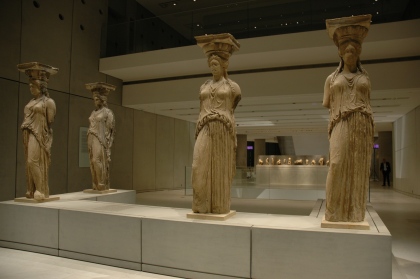
The new Acropolis Museum, which was officially opened on June 20th, is finding itself a fundamental place in the Athenian life. The dozed off neighborhood around the streets “Makriyanni,” “Hadzihristou,” and “Mitzeon,” which were suffering the long construction period, are now turning into the liveliest part of the Greek capital. The patience of shop and coffee house owners, whose patience was running out because of the construction, is finally going to pay off. Long lines of tourists from all over the world are formed in front of the elegant building of the museum. 120 000 people have visited the museum for the first 10 days of its opening, which means that there were 12 000 people per day!
During the first five days, tickets could be bought only online and daily, 11 000 tickets were sold. Many people prefer to reserve their tickets over the phone and others – through a tourist agency. Right now, the Acropolis Museum is working on a longer day – from 08:00AM until 08:00PM but the lines start forming long before the opening hour. All celebrities, who come to Athens, also visit the museum. The mentioned stretched working times will remain until the end of 2009.
The opening of the new Acropolis Museum was a top story all over the world and it was reported by 440 journalists from 167 media worldwide and the positive remarks were dominating. The price for all the celebrations was included within the previously set budget of ?3 million. The website of the museum is doing great as well and for the first two weeks it was visited by 260 000 people from 169 countries, including exotic places like Nepal and Mongolia.
Greek students are showing great interest in the new Acropolis Museum. This is the reason why Aegean Airways announced that it will give out free tickets to 10 000 from 208 different schools in Island Greece, who will be able to come to Athens for a day and visit the museum with their teachers. Now a decision is expected by the Ministry of Transportation regarding releasing students from paying airport taxes and by the Ministry of Education, which should commission the teachers. This program includes schools from Crete, Lesbos, Corfu, Kefalonia, Kos, Limnos, Mykonos, Rhodes, Samos, Santorini, Chios and from many more smaller and unknown Greek islands.